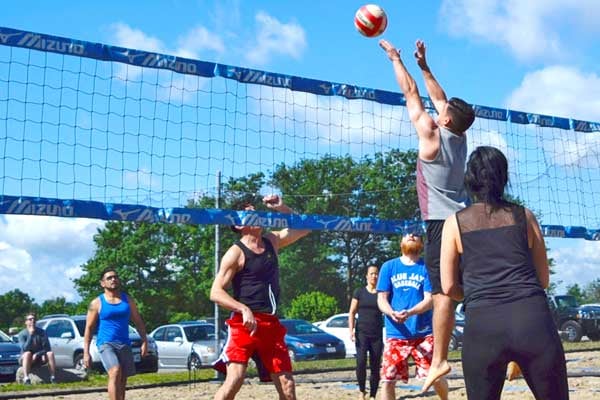Company wins 2017 Wellness Award as part of Canada's Safest Employers

An aging employee demographic has proved to be no match for the robust wellness program at Niagara Casinos, according to Colleen Falco, director of HR services.
Five years ago, the 4,000-employee company — which operates both Fallsview Casino Resort and Casino Niagara in Niagara Falls, Ont. — overhauled its wellness program with its most-senior workers in mind.
“The average age in our organization is 49,” she says. “The goal was to start to promote positive health and healthy lifestyles as a means to prevent some of the diseases that come naturally with aging, as well as some of the risks that come in an organization that’s 24-7 and shift work, and really try to encourage our folks to maintain a healthy lifestyle.”
A major initiative included overhauling the in-house cafeterias, ensuring fresh meal selections, calorie counts and healthy alternatives were all featured more prominently.
“For example, if you want to choose that burger and fries today, how many minutes of cycling do you need to burn that off?” says Falco.
The company’s efforts contributed to tangible reductions in short-term disability and long-term disability claims, as well as drug spend, she says.
“It’s actually astonishing to us… With an aging demographic, you wouldn’t expect that. And we do attribute it to our wellness program.”
Improving the company’s health and wellness programming was simply the right thing to do, says Falco.
“Our wellness program is a significant way that we can offer initiatives and fun events that help to build a sense of community, as well as show our employees that we care about them, while reducing costs,” she says.
A dining-room overhaul isn’t the only healthy lifestyle initiative, says disability services manager Lindsay Daw.
Wellness centres are offered at both Niagara Casinos locations, including fitness equipment, weights and stretching areas.
“All employees are able to access that, and some will even use it as a quick stretch break if they have time over their lunch,” she says.
The company also offers subsidized paddleboarding, kickboxing, volleyball tournaments and yoga programming periodically.
“We leverage the local wellness community a lot,” says Falco. “They are amazing. We have 4,000 employees, so it’s a great opportunity for them to get in front of (our staff).”
Much of the recognition is owed to Niagara Casinos’ “very active” wellness committee, which strives to roll out healthy initiatives each quarter, she says.
“They’re the ones that come to us with fresh ideas for new events or initiatives. It helps to keep the program fresh and alive in the organization.”
Holistic planning is critical to the program’s success, with Niagara Casinos using a “top-box” report — a combination of internal data and statistics from third-party disability providers — to determine employees’ overall health. On-site voluntary health screenings also prove useful in identifying risk factors.
“They take that information and really try to target areas that are higher risk in the organization. I think that level of planning is really what’s made the program effective,” says Falco.
The most recent report from January revealed 67 per cent of participating workers had three or more health-risk factors, largely driven by nutrition, she says.
“Obesity, diabetes and heart disease were the biggest disease categories that were identified as a risk for the organization,” says Falco.
The team responded by offering a Weight Watchers program, with 116 employees participating — 85 per cent of whom said they wouldn’t have if it wasn’t offered on-site. A total of 1,300 pounds were lost.
“It just shows that sometimes when you make something available on-site, it just makes it easier,” says Falco. “That’s our philosophy. Not to offer the same programs all the time… but rather mix it up and offer different things to keep it top of mind.”
This article originally appeared in the October/November 2017 issue of COS.





